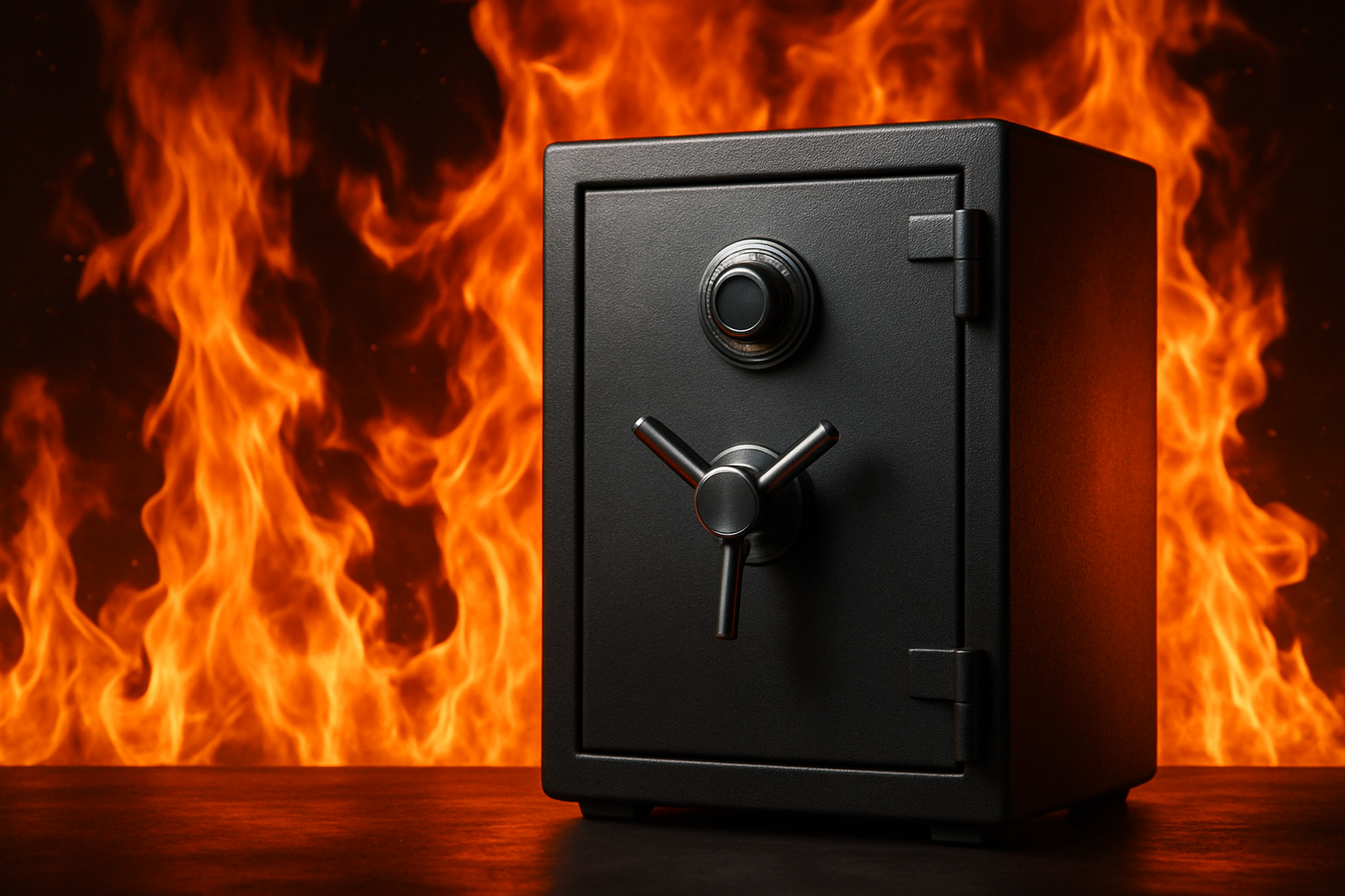If you’re looking to protect your most valuable documents, photos, or digital media from a fire, you’ve likely searched for a "fireproof safe." But here's the crucial truth: no safe is truly fireproof. The correct term is fire-resistant.
This distinction isn't just semantics; it's a critical factor in how well a safe will perform in a real-world fire. A truly "fireproof" safe would be indestructible, able to withstand any heat for any duration. Fire-resistant safes, on the other hand, are engineered to protect their contents by keeping the interior temperature and humidity below critical thresholds for a specified period of time.
Understanding the Ratings: The Role of UL Certification
The best way to know if a safe is genuinely fire-resistant is to look for a third-party certification label, with Underwriters Laboratories (UL) being the most recognized name. These labels aren't just for show; they indicate that the safe has undergone a series of rigorous tests to earn its rating.
The most common UL tests for safes include:
-
The Fire Endurance Test: The safe is placed in a furnace and heated to extreme temperatures, often up to 1,700°F, for a set duration (e.g., 30 minutes, 1 hour, or 2 hours). The safe passes if the interior temperature and humidity remain below a specific limit.
-
The Explosion Test: This test checks the safe’s integrity under rapid heating. The safe is heated to 2,000°F in a matter of minutes to simulate a flash fire. If it doesn't explode or burst open, it passes.
-
The Impact Test: This simulates a collapse during a fire. After being heated, the safe is hoisted and dropped onto a pile of rubble from a height of up to 30 feet. It is then returned to the furnace to ensure it remains intact.
Choosing the Right Rating for Your Valuables
The type of fire-resistant safe you need depends entirely on what you're trying to protect. Not all materials have the same heat tolerance.
-
For Paper Documents: UL Class 350 Paper begins to char and turn brittle at around 400°F. A UL Class 350 safe is certified to keep the interior temperature below 350°F for the duration of its rating (e.g., 1 hour, 2 hours). This is the standard for protecting important papers, deeds, and passports.
-
For Digital Media: UL Class 125 Digital media like hard drives, USB sticks, memory cards, and CDs are far more sensitive to heat than paper. They can become unusable at temperatures as low as 125°F. A UL Class 125 safe is specifically designed to keep the interior temperature below 125°F and humidity below 80%. This is the only type of fire-resistant safe that should be used for sensitive electronics.
Materials and Construction: What Makes a Safe Fire-Resistant?
A safe's ability to resist fire is all about its insulation and seals. The outer shell is typically made of thick steel, while the inner cavity is filled with fire-resistant materials.
-
Insulation: Safes use materials like gypsum concrete, ceramic fibers, or a fire-resistant composite to create a thick barrier that absorbs and dissipates heat. Some safes work by releasing a small amount of steam when heated, which helps to keep the interior cool and humid.
-
Seals: Look for an expanding fire seal, often made of a material like Palusol. This seal expands when exposed to heat, creating a tight, smoke-proof barrier that prevents hot gases and moisture from entering the safe's interior. Cheaper models may use simple foam or rubber seals that will fail quickly.
Key Misconceptions to Avoid
-
All safes are fire-resistant. Many safes are designed only for burglary protection. They may look sturdy but lack the necessary insulation and seals to protect against fire. Always check for a certification label.
-
"Heavy" means "fireproof." The weight of a safe comes from the steel and insulation. While fire-resistant safes are heavy, a heavy safe is not automatically fire-resistant.
-
A fire rating is enough. A safe's rating is a promise of performance under a specific set of conditions. For maximum protection, you should also consider where you place your safe and, for larger models, ensure it is anchored to the floor to prevent it from being stolen or damaged during a structural collapse.

